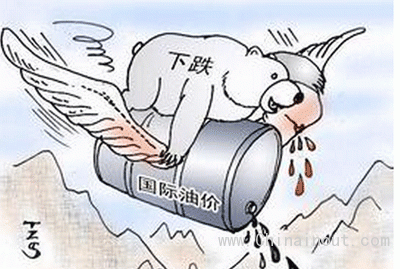
這其中的原因在于,,它們直接競爭的對手,是那種用汽油做燃料的汽車,,而油價暴跌后這種車會變得更便宜,。
阿明表示,不過風力發(fā)電場,、太陽能發(fā)電廠和其他可再生發(fā)電廠應(yīng)該不會受到油價暴跌的影響,,因為它們面臨的競爭與上述兩者不可同日而語。
阿明表示:“我們并未發(fā)現(xiàn)油價對可再生發(fā)電有什么直接影響,。”他還解釋說,,燃油發(fā)電廠所發(fā)電量只占如今全球發(fā)電量的5%,。
上周末,在Irena阿布扎比召開的年度大會會場外,,他說:“我們預(yù)計會看到的影響是在液體生物燃料的生產(chǎn)和投資方面,,以及電動汽車和混合動力汽車的投資方面。”
阿明承認,,油價下跌為可再生能源產(chǎn)業(yè)帶來了不確定性,。他還承認,油價下跌后天然氣價格可能也會有所下跌,,這會為風力發(fā)電和太陽能發(fā)電帶來更多問題,。
不過,他對該產(chǎn)業(yè)的總體前景感到樂觀,。他說,,自Irena四年前開始運營以來,可再生能源產(chǎn)業(yè)已發(fā)生徹底改變,。
根據(jù)Irena的數(shù)據(jù),,2013年可再生能源占全球總發(fā)電量的22%,占全球最終能源消耗總量的19%,。其中,,后者除了包括發(fā)電以外,還包括取暖和交通運輸方面的能源消耗,。
然而,,這一19%的比例自2011年以來幾乎沒有變動過。2011年,,聯(lián)合國支持下一項名為“人人享有可持續(xù)能源”(Sustainable Energy for All)的行動倡議曾經(jīng)提出,,要在2030年以前,把可持續(xù)能源占全球能源組合的比例提升一倍,。
Irena創(chuàng)新與科技部門主管多爾夫?吉倫(Dolf Gielen)表示,,該比例每年的增長幅度只有0.2個百分點,而它需要每年增長1個百分點才行,。
自2011年以來,,風力發(fā)電、太陽能發(fā)電及其他形式可再生能源占全球新增發(fā)電量的比例約為50%,。(中國進出口網(wǎng))
Tumbling oil prices look set to hit electric cars and biofuels harder than other parts of the green power industry, the head of the world’s leading renewable energy agency has warned.
That is because they compete directly with rivals such as petrol-fuelled cars that are becoming cheaper to run as oil prices fall.
But wind farms, solar plants and other renewable electricity generators should not be affected by the price plunge because they do not face anything like the same level of competition, said Adnan Amin, director-general of the International Renewable Energy Agency, Irena, an intergovernmental body based in Abu Dhabi.
“We don’t see a direct impact of oil prices on power generation,” said Mr Amin, explaining oil-fired electricity plants only accounted for around 5 per cent of global power generation today.
“Impacts we expect to see are in the production of liquid biofuels, investment in liquid biofuels and investment in electric mobility and hybrid mobility,” he said on the sidelines of the agency’s annual assembly in Abu Dhabi over the weekend.
Mr Amin conceded the rapid decline in oil prices was creating uncertainty for the renewables industry and may be followed by some falls in the cost of gas, which could pose more of a problem for wind and solar power generators.
But he was bullish about the overall outlook for the sector, which he said had changed comprehensively since Irena first began operating four years ago.
Renewable energy accounted for 22 per cent of global electricity generation in 2013, according to Irena, and 19 per cent of total final energy consumption, which includes heating and transport as well as electricity.
But that 19 per cent figure has barely changed since 2011 when a UN-backed initiative known as Sustainable Energy for All set a goal of doubling renewables’ share of the global energy mix by 2030.
The share has only been growing by about 0.2 percentage points a year when it needs to be going up by about 1 percentage point annually, said Dolf Gielen, Irena’s head of innovation and technology.
Still, wind farms, solar plants and other forms of renewable energy have accounted for around half the new power generation capacity added globally since 2011.







